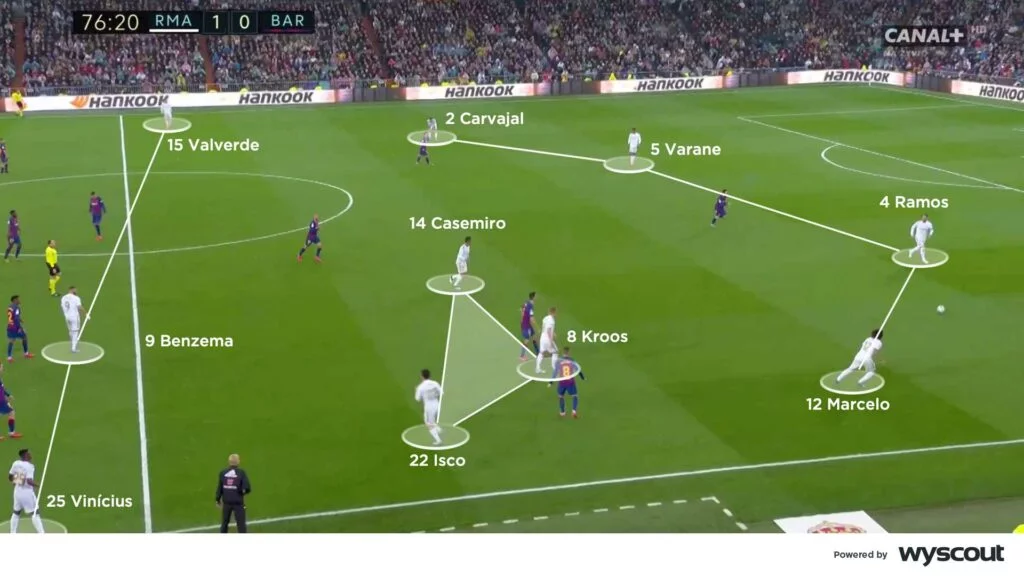Football Tactics and Strategies shape the ever-evolving landscape of modern football. Across elite leagues and international tournaments, tactical innovations define success and failure as much as raw talent and physical skill. In 2025, managers use refined approaches—mixing high press, possession play, fast counterattacks, and flexible formations—to outthink and outplay opponents. This article explores essential tactics and strategic concepts that are revolutionizing the game today.
Football Tactics and Strategies: The Rise of High Press and Quick Transitions
One of the most influential football tactics and strategies in the modern era is high pressing. Teams like Liverpool and FC Barcelona exemplify this by defending aggressively near the opponent’s penalty area to quickly recover possession. This approach forces errors and limits the opposition’s build-up time.
Upon winning the ball, these teams execute rapid transitions—often with lightning speed—looking to exploit unsettled defenses. Fast-paced counterattacks operate as tactical weapons, leveraging speed and precision passing to create immediate scoring chances before opponents can reorganize.
Football Tactics and Strategies: Possession Game and Positional Play
In contrast to high press, another fundamental approach dominating pro football is the possession game. Guided by Pep Guardiola’s philosophy, teams like Manchester City and Bayern Munich prioritize controlling the ball, dictating pace, and patiently constructing attacks.
This tactic wears down opponents and allows players to exploit positional overloads and create high-quality chances. Positional play, often practiced through rondo drills in training, teaches players to maintain shape and pass decisively under pressure, breaking defensive lines methodically.
Football Tactics and Strategies: Evolution and Popular Formations
A clear trend in football tactics and strategies is the evolution of formations emphasizing tactical flexibility. The 4-2-3-1 formation has surged in popularity, offering balance between defense and attack, while enabling numbers in midfield. Teams are increasingly employing fluid systems divisible into defensive compactness and offensive creativity.
Hybrid roles—full-backs operable as midfielders and forwards dropping deep—create unpredictable attacking patterns. Pep Guardiola’s use of a “box midfield” and goalkeepers such as Ederson acting as playmakers embodies this fusion, pushing match control and ball circulation to new heights.
Football Tactics and Strategies: Defensive Organization and Set-Piece Mastery
Strong defense remains core to tactical success, with teams like Atlético Madrid known for their organized, compact defensive blocks that frustrate even the best attackers. Modern defensive strategies include zonal marking, pressing triggers, and maintaining compact team shapes to limit spaces.
Equally transformative are set-piece tactics—once considered secondary but now refined through data analysis to become offensive weapons. Clubs like Arsenal deploy specially choreographed corners and free kicks using movement patterns and blocking schemes studied in-depth, resulting in crucial goals.
Football Tactics and Strategies: Data-Driven Analysis and In-Game Adaptation
The 2025 tactical landscape is shaped by data analytics powering coaching decisions. Metrics like expected goals (xG), possession value models, and player heatmaps guide everything from player recruitment to in-match strategy adjustments.
Managers adapt formations during games to counter opponents’ strengths or exploit weaknesses. Shifts from 4-2-3-1 to 3-4-3, or adapting pressing intensity and position, display the importance of tactical agility. The use of AI and predictive analytics ensures decisions are backed by real-time info, optimizing tactics for maximal impact.
Football Tactics and Strategies: Iconic Tactical Moments and Lessons
Historical matches illuminate how football tactics and strategies have evolved: Hungary’s midfield mobility in 1953 dismantled England’s WM formation; Guardiola’s Barcelona revolutionized possession and pressing; and Manchester City’s 2023 “box midfield” system achieved remarkable success with non-traditional formations.
These milestones teach today’s teams the value of innovation, adaptability, and mastering the balance between defense and attack in football’s tactical arms race.
Football Tactics and Strategies: The Future – Fluidity and Predictive Management
Looking forward, tactical fluidity will dominate. “Positionless” football where players interchange roles dynamically will become commonplace. Teams will blend defensive and offensive setups seamlessly based on game states.
Advances in AI will enable semi-automated in-game tactical changes responsive to detailed performance data. Coaches will increasingly manage “all-rounders” capable of multiple roles, ensuring formations are flexible frameworks rather than rigid schematics.
In this evolving paradigm, tactical intelligence and rapid innovation will define the best teams and players of tomorrow.
Read also:
mexico national football team vs honduras national football team matches
england national football team vs latvia national football team lineups
jamaica national football team vs guatemala national football team lineups
portugal national football team vs denmark national football team
bhola bhala tha sidha sadha tha lyrics
religious india namami shamishan
namami shamishan lyrics in english
ambe tu hai jagdambe kali aarti lyrics
